Underage Drinking
Outline
Introduction to Underage Drinking
- What is underage drinking?
- Statistics: Prevalence of underage drinking globally and regionally.
- Why it is an important issue to address.
- Brief introduction to the impacts on individuals, society, and long-term health.
The Nature of Underage Drinking
- Psychological factors contributing to underage drinking.
- Social pressures, media influence, and peer groups.
- Exploring the link between adolescence, curiosity, and risky behavior.
Health Impacts of Underage Drinking
- Short-term effects: Intoxication, accidents, and alcohol poisoning.
- Long-term health consequences: Brain development, addiction, liver disease.
- Emotional and mental health effects.
Legal Aspects of Underage Drinking
- Overview of global legal frameworks surrounding alcohol consumption.
- Consequences for minors caught drinking: Legal, educational, and community service penalties.
- Parental liability and responsibility in cases of underage drinking.
Social and Economic Costs
- How underage drinking affects families and communities.
- The economic burden: Healthcare, law enforcement, and rehabilitation.
- The link between underage drinking and crime rates.
Target Audience: Understanding the Vulnerable Groups
- Age demographics most at risk.
- Socioeconomic factors and underage drinking.
- How schools, parents, and communities fit into the target audience.
Role of Marketing and Media in Underage Drinking
- How alcohol advertising and product placement affect minors.
- The role of social media in glamorizing drinking culture.
- Case studies of marketing campaigns targeting underage drinkers (intentionally or unintentionally).
Prevention and Education Programs
- School-based programs: Effectiveness of alcohol education.
- Parental involvement: Communication and education at home.
- Government and NGO initiatives aimed at reducing underage drinking.
- Campaign analysis: Examples of successful and unsuccessful programs.
Innovative Strategies to Combat Underage Drinking
- Technological solutions: Apps, monitoring systems, and educational platforms.
- Engaging the youth through gamification and peer-to-peer education.
- Case study: A successful prevention strategy from a specific region or country.
Future Trends and the Road Ahead
- Forecasting trends in alcohol consumption among youth.
- How shifting cultural norms and evolving legal frameworks could impact underage drinking in the future.
- The role of technology, data analytics, and AI in preventing underage drinking.
Detailed Content
1. Introduction to Underage Drinking
Underage drinking remains a critical global issue that affects millions of families, communities, and individuals. Despite strict laws and societal efforts to curb this behavior, alcohol consumption among minors continues to persist. According to the World Health Organization (WHO), approximately 10-30% of minors in high-income countries admit to engaging in binge drinking by the age of 15. This trend is prevalent across the world, with varying cultural and socio-economic factors driving youth toward alcohol experimentation.
This soft article delves deep into the nature of underage drinking, exploring its root causes, health impacts, and societal implications. By understanding the target demographic, we aim to offer strategies and insights for effective prevention. Moreover, this article will also analyze various prevention and intervention programs, highlighting success stories, identifying challenges, and proposing innovative solutions to address this global issue.
2. The Nature of Underage Drinking
Psychological Factors Contributing to Underage Drinking
Adolescence is a turbulent period of emotional, social, and psychological development. As teenagers seek independence, many are prone to experimenting with alcohol as a form of rebellion or social bonding. Neurological studies indicate that the adolescent brain is still in the process of developing, particularly in areas related to decision-making, impulse control, and risk assessment. This vulnerability makes teens more susceptible to engaging in risky behaviors, such as underage drinking.
Social Pressures and Media Influence
Peer pressure remains one of the most significant contributing factors to underage drinking. In social settings, teenagers may feel compelled to fit in by drinking alcohol, often encouraged by their friends or older individuals. Additionally, the portrayal of alcohol in movies, TV shows, and social media can glamorize drinking, making it seem appealing or harmless. Youth are bombarded with images of alcohol consumption in parties, celebrations, and casual settings, which can distort their perception of the associated risks.
3. Health Impacts of Underage Drinking
Short-Term Effects
Underage drinking has immediate, short-term effects on the body. Acute intoxication can lead to poor coordination, impaired judgment, and risky behaviors such as driving under the influence, unprotected sexual activity, or violence. In extreme cases, alcohol poisoning poses a life-threatening risk, as young people may not fully understand the dangers of overconsumption.
Long-Term Consequences
The adolescent brain is still developing, and exposure to alcohol during this critical period can have lasting consequences. Studies have shown that regular alcohol consumption in adolescence can impair memory, decision-making, and cognitive function well into adulthood. Chronic drinking can also increase the risk of alcohol dependency later in life, as well as other health issues, such as liver disease, cardiovascular problems, and weakened immune function.
4. Legal Aspects of Underage Drinking
Global Legal Frameworks
Laws surrounding underage drinking vary from country to country, but the general consensus is that minors should be prohibited from purchasing or consuming alcohol. In the United States, the legal drinking age is 21, while in many European countries it ranges from 16 to 18. Despite these laws, underage drinking continues to be a challenge due to inconsistent enforcement and the ease with which minors can access alcohol through older friends, family members, or even online platforms.
Parental Liability and Responsibility
In many legal systems, parents or guardians may face legal repercussions if they are found to be facilitating or ignoring their child’s underage drinking. This can include fines, community service, or in extreme cases, criminal charges. Increasingly, governments are implementing "social host" laws that hold parents accountable for underage drinking that occurs on their property, even if they were unaware of the alcohol consumption.
5. Social and Economic Costs
Impact on Families
Underage drinking does not occur in a vacuum—it has ripple effects on families and communities. Parents of minors who drink often experience guilt, shame, and anxiety, while sibling relationships can become strained as well. The financial burden of healthcare, legal fees, and addiction treatment also places significant stress on families dealing with a child’s drinking problem.
Economic Burden on Society
From a societal perspective, the costs of underage drinking are enormous. Healthcare systems bear the burden of treating alcohol-related accidents, injuries, and long-term health consequences. Law enforcement must allocate resources to managing underage drinking incidents, while educational institutions often struggle with students who underperform or drop out due to alcohol-related problems. The cumulative economic toll runs into billions of dollars annually across many nations.
6. Target Audience: Understanding the Vulnerable Groups
Age Demographics Most at Risk
The majority of underage drinkers fall into the 15-20 age range. At this stage, teenagers are curious, impressionable, and often seeking social approval. Younger adolescents, around 12-14, may also experiment with alcohol, particularly if they have older siblings or peers who drink. Recognizing these age groups as vulnerable is critical in tailoring effective prevention strategies.
Socioeconomic Factors
Underage drinking is not limited to any one demographic, but certain socioeconomic factors can increase the likelihood of alcohol abuse among minors. Teens from lower-income families may lack access to extracurricular activities or safe social environments, leading them to seek out risky behavior as a form of escapism. Conversely, wealthier teens with more disposable income may have easier access to alcohol and view drinking as part of their social status.
7. Role of Marketing and Media in Underage Drinking
Alcohol Advertising and Youth Exposure
Alcohol advertising is pervasive, appearing on television, online, and in public spaces. While many countries have regulations preventing alcohol ads from directly targeting minors, loopholes and subtle messaging often make these campaigns accessible to younger audiences. For example, ads that associate drinking with fun, adventure, or success can resonate strongly with teenagers, even if they are not the intended audience.
Social Media and the Influence of Digital Culture
The rise of social media has amplified the visibility of alcohol consumption among young people. Platforms like Instagram, TikTok, and Snapchat frequently feature images and videos of users drinking at parties, concerts, and other social gatherings. This can create a “fear of missing out” (FOMO) among teens, who may feel pressured to drink in order to fit in with their peers or gain social validation online.
8. Prevention and Education Programs
School-Based Programs
Education is a crucial tool in combating underage drinking. School-based programs that focus on teaching students about the risks of alcohol use can be highly effective. Programs like the AlcoholEdu initiative in the U.S. use interactive, science-based curricula to educate middle and high school students on the short- and long-term consequences of alcohol abuse. These programs often incorporate peer discussions, role-playing, and real-life scenarios to help students resist peer pressure and make informed decisions.
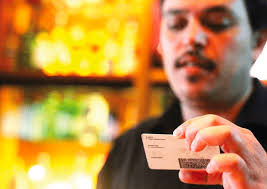 Sunshine State
Sunshine State
 Photo ID maker online
Photo ID maker online
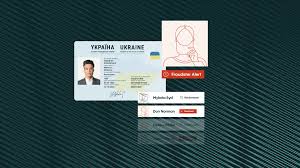 counterfeit documents
counterfeit documents
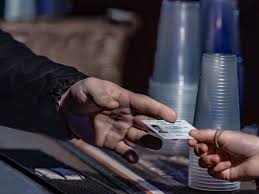 fake IDs for sale
fake IDs for sale
 scannable fake IDs
scannable fake IDs
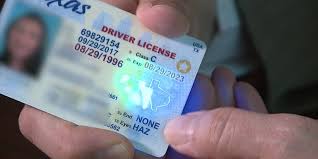 Fake Tennessee ID
Fake Tennessee ID
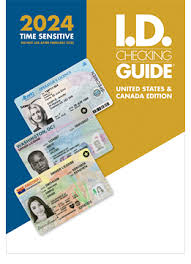 Underage Drinking
Underage Drinking
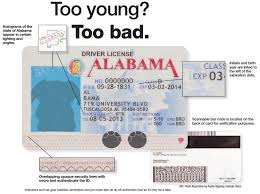 Tennessee laws on fake IDs
Tennessee laws on fake IDs
